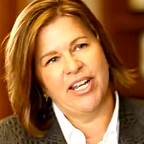LEAP 1: Ordinary Creativity
Ordinary creativity is the focus of this project. Document and analyze one example of a digital author to deconstruct and analyze the choices they make and discover what aspects of their work are most appreciated by their target audiences. You will create a screencast analysis video that gives insight on this individual’s work by applying the critical questions and key concepts of digital and media literacy. Your purpose is to help a general audience gain insight on the ways in which ordinary creativity is expressed by digital authors.
Criteria for Evaluation
- You have developed case study of a digital author using key principles and ideas learned from the course, using critical questions to examine their context, purpose, values, and the choices they make in their creative work. You have discovered what aspects of their work are most appreciated by their target audiences and you have generated new questions about the cultural practice of digital authorship.
- Your own screencast is creative and original and it shows that you have applied ideas you are learning in the course. The screencast is well-organized and professional in quality with strong use of language and imagery.
- You have written an essay that describes your creative experience and posted the work on your Notion page. You have included a Works Cited list to identify all the information sources you used in your writing and research process. You have tweeted a link to your work using the #EDC534 hashtag.
Get Inspired!
You can find other examples of LEAP 1 work from EDC 534 students enrolled in previous years here.
A Suggested Work Process
SELECT A DIGITAL AUTHOR WHOSE WORK YOU WILL ANALYZE. For this assignment, you may choose to focus on digital authors who create and share their work on YouTube, Instagram, Facebook, or TikTok. But you may also choose other creative people who can be conceptualized as digital authors. The choice is up to you. Because the choice of a digital author and a particular work product (or digital artifact) will shape the content of what you discuss in your screencast, choose something that’s interesting and important to you, as you will be considering the potential social, cultural, political and economic implications of this ordinary person’s creative expression.
SELECT A PARTICULAR WORK TO ANALYZE. It’s a good idea to review several examples of the creative individual’s work in order to understand to deconstruct and analyze the choices they make and discover what aspects of their work are most appreciated by their target audiences. Select one example to examine in detail. Gather as much information as you can to answer the following questions:
- Who is the author and what is the purpose? Who’s the intended audience?
- What techniques are used to attract and hold your attention?
- What lifestyles, values and points of view are represented?
- How might different people interpret this message differently?
- What is omitted?
Depending on the content, you should consider using some other questions for analyzing media messages — click here for NAMLE critical questions
DEVELOP KEY IDEAS AND WRITE THE VOICE-OVER NARRATION. Use creative brainstorming to generate great ideas in response to your critical analysis of one special work and your reflection on the ordinary creativity of your digital author. Apply at least one relevant concept from the course textbook, Create to Learn Keep in mind your target audience and your purpose as you develop your narration. Other advice:
- Be concise: Make sure your word count does not exceed 450 words maximum (3 minutes) — this is number of words you can use
- A strong thesis statement will help you create a screencast with the maximum impact on the audience
- As you develop your work, get feedback from people to make sure your work accomplishes its purpose.
SELECT IMAGES TO ACCOMPANY YOUR NARRATION. A screencast is a video that includes a voiceover plus images from your computer screen. You will make many choices of how to use images for your project. You will probably use a mixture of still and moving images that you gather to illustrate ideas about the creative individual whose work you are exploring.
REHEARSE AND PRODUCE YOUR SCREENCAST. Screencasting is a simple but powerful creative video production tool. Watch a 3-minute video video tutorial that demonstrates the basics of how to use Screencast-o-Matic.It takes some practice to make a good screencast, so you should plan on making a practice screencast to experiment with what’s possible. You may want to rehearse the timing and sequence of the spoken script as you combine it with video and other images.
UPLOAD YOUR COMPLETED VIDEO. Use your Gmail account to access your YouTube account and upload your video there. Choose to set privacy settings to “public” or “unlisted” — this is your choice.
REFLECT ON YOUR WORK. Post your screencast to your Medium page. You can embed your video onto your blog post. Your post must include a short (500–750 word) essay that briefly describes your creative process, including the struggles and the breakthroughs you experienced. After you have established an account on Medium, follow the instructor at @reneehobbs. She will then add you to the list of “writers” for the class publication, Digital Authorship. You can then follow these directions to submit your work for publication.
😎 Pro-Tip: After you complete your LEAP 1 draft and post it to your Medium page, add a feature image to increase the appeal of the page. Please add 5 tags to increase findability.
